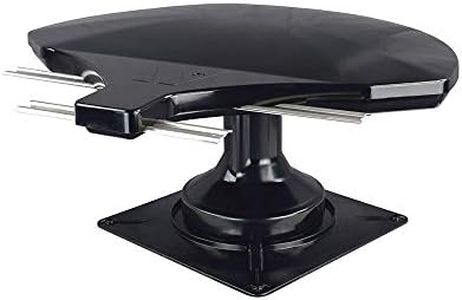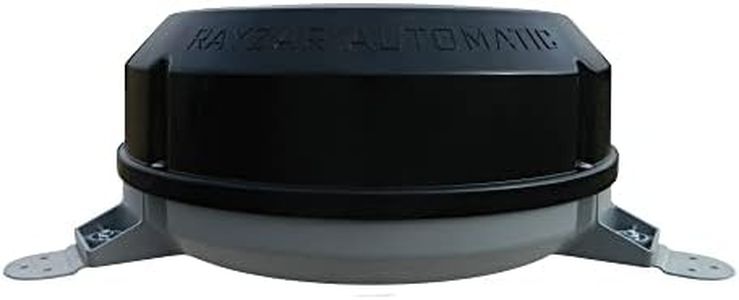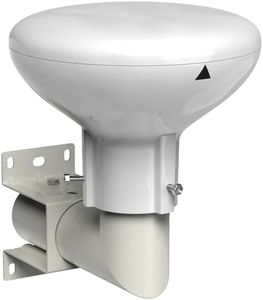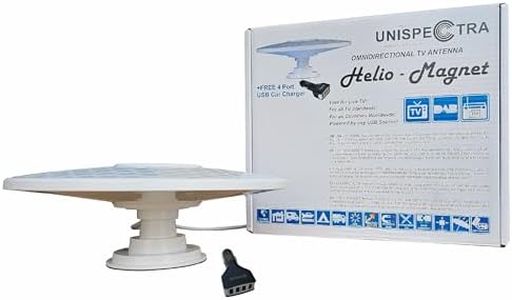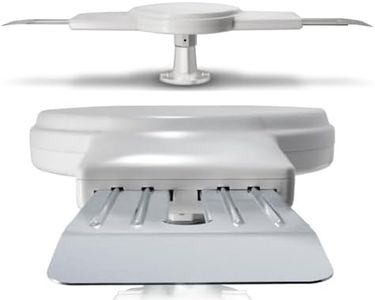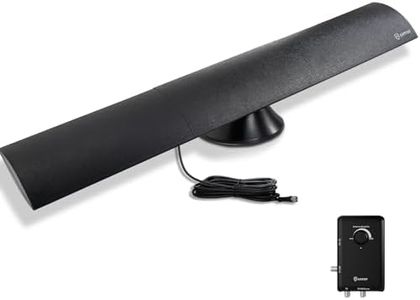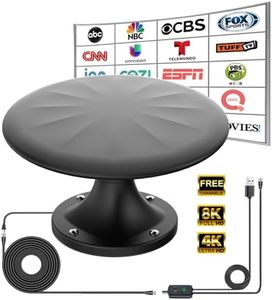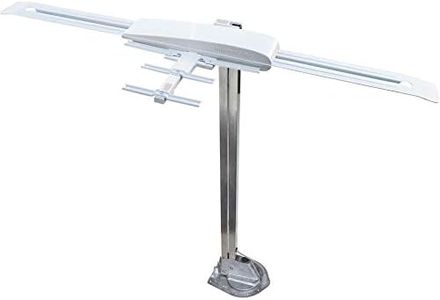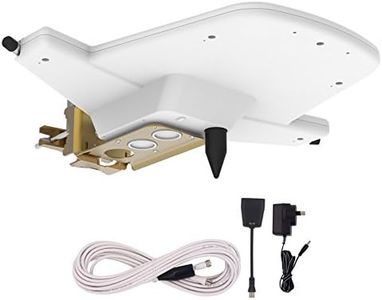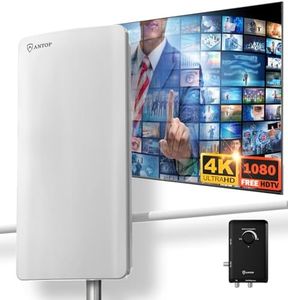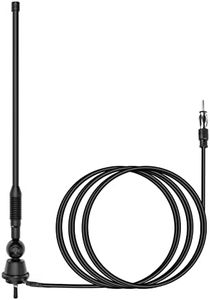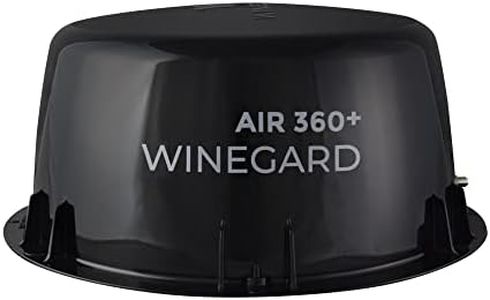We Use CookiesWe use cookies to enhance the security, performance,
functionality and for analytical and promotional activities. By continuing to browse this site you
are agreeing to our privacy policy
10 Best Rv Antennas
From leading brands and best sellers available on the web.By clicking on a link to a third party's website, log data is shared with that third party.
Buying Guide for the Best Rv Antennas
Choosing the right RV antenna is key to having reliable access to television channels and sometimes internet or radio while on the road. With so many options out there, it helps to understand what features and specifications truly matter for your travel lifestyle. Begin by considering where you usually camp or park—remote, rural, or urban areas—and what kind of entertainment or connectivity you prioritize most. Knowing these will help you zero in on an antenna that meets your needs without unnecessary features you might never use.Antenna TypeThe type of antenna describes whether it’s designed for over-the-air TV, satellite, AM/FM radio, or other signals. This is important because each type will only pick up certain kinds of broadcasts. Over-the-air antennas are great for picking up local TV stations, while satellite antennas can get channels anywhere you travel, as long as you can see the sky. Think about what you want to watch or listen to most—if it’s local news or basic channels, over-the-air may be sufficient; for constant channel variety, a satellite-ready antenna is better.
Reception RangeReception range tells you how far an antenna can reach to pull in signals from broadcast towers. This is crucial if you often travel to or camp in remote areas. Reception range is usually measured in miles. Short ranges (under 30 miles) are fine for urban or suburban destinations with many nearby towers. Medium ranges (30–50 miles) work well for semi-rural travel. Long ranges (50+ miles) are best if you camp in very remote locations. Think about your usual destinations and pick an antenna with a range to match those areas.
AmplificationAmplification relates to the antenna’s ability to boost weak signals, often using a built-in powered amplifier. This is important if you want clearer images and more channels, especially in places with weak broadcast signals. Non-amplified antennas work where signals are strong, but if you travel off the beaten path, a model with adjustable or automatic amplification can ensure better reception. Decide how often you’ll need to pull in faraway stations or use your antenna in less-connected regions.
Mounting StyleMounting style refers to how and where you install the antenna—permanently on the roof, on a telescoping pole, or as a portable unit. Permanent mounts are convenient and always ready for use, while portable and pole-mounted options offer flexibility to adjust position for better reception. If you want a set-it-and-forget-it solution, go for a roof-mounted option. If you enjoy tweaking for the best signal or use your RV in very different locations, a portable or pole-mount might suit you better.
Signal CompatibilitySignal compatibility means what types of signals (such as UHF, VHF, or digital HD) the antenna can receive. In many regions, TV stations broadcast on both UHF and VHF frequencies, and modern antennas often support high-definition digital signals. It’s important to pick an antenna that is compatible with all frequencies used in areas where you’ll be traveling most; otherwise, you may miss out on some channels.
Ease of UseEase of use covers how simple it is to set up, aim, and adjust the antenna. This is key for overall convenience and also affects how quickly you can get reception when you arrive at a new place. Some antennas automatically find the best direction for signals, while others need manual adjustment. If you prefer straightforward solutions, look for antennas with auto-aim features or easy-to-understand setup processes.
Durability and Weather ResistanceDurability and weather resistance reflect how well the antenna endures outdoor conditions like rain, wind, heat, or cold. This matters because your RV experiences all kinds of weather, especially if you’re traveling year-round. Antennas built with UV-resistant plastics and watertight seals last longer and give you trouble-free performance. Think about how often you travel and whether you’ll encounter rough weather; choose an antenna that matches your environment.
